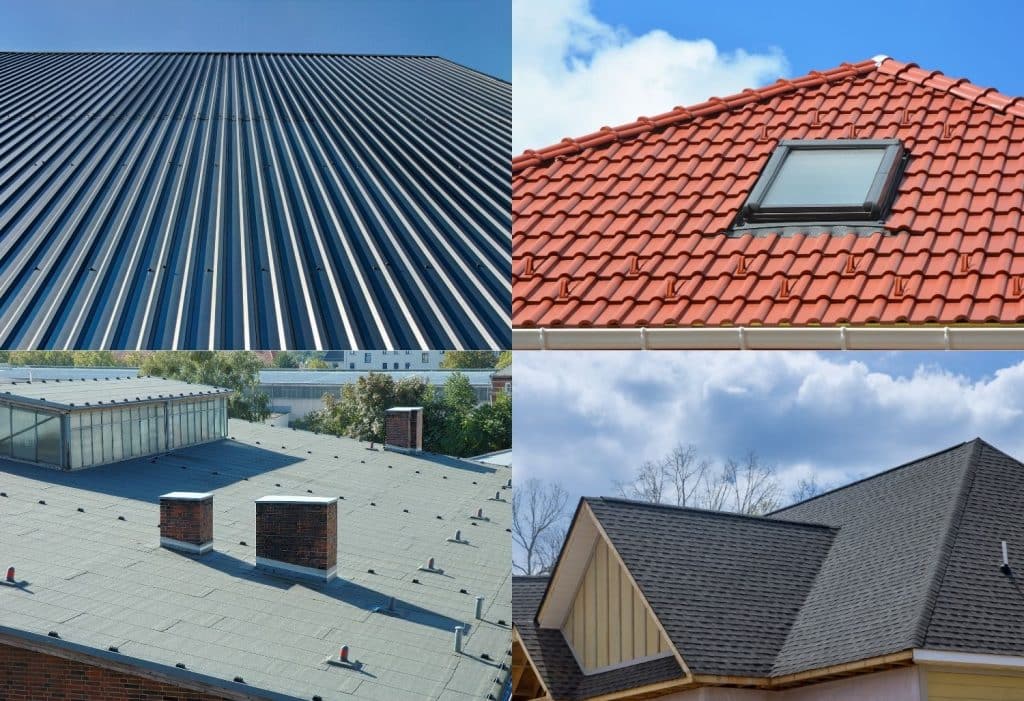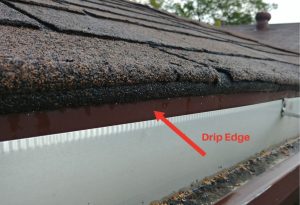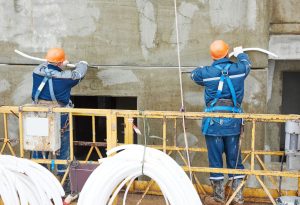Estimated Reading Time: 11 minutes
Key Takeaways
- Different roof materials require specific waterproofing approaches for optimal performance
- Flat roofs need seamless membrane systems, while pitched roofs benefit from coating applications
- Concrete roofs require penetrating sealers combined with surface protection systems
- Metal roofing demands flexible coatings that accommodate thermal expansion
- Professional assessment ensures proper system selection based on structural requirements
- Climate considerations in Gauteng influence material choice and application methods
Selecting the appropriate waterproofing system for your roof isn’t a one-size-fits-all decision. The material composition, structural design, and environmental exposure of your roof all influence which waterproofing approach will deliver optimal long-term protection. Property owners across Gauteng face diverse roofing challenges, from traditional clay tiles to modern metal sheeting, each requiring tailored solutions.
At TT Waterproofing, we’ve developed expertise in matching roof waterproofing systems to specific roof materials through nearly a decade of service across Pretoria and surrounding areas. Understanding how different roof materials interact with various waterproofing technologies helps property owners make informed decisions that protect their investments. This comprehensive guide explores the critical factors that determine the most suitable roof waterproofing system for your property’s unique requirements.
Roof Material Compatibility Matrix
| Roof Material | Recommended System | Application Method | Lifespan | Best For |
| Concrete | Liquid membranes | Spray/roller | 15-20 years | Large flat surfaces |
| Metal Sheeting | Elastomeric coatings | Spray application | 12-18 years | Industrial buildings |
| Clay/Concrete Tiles | Flexible sealants | Brush/spray | 10-15 years | Residential pitched roofs |
| Flat Membrane | EPDM/TPO systems | Heat welded | 20-25 years | Commercial flat roofs |
| Asphalt Shingles | Acrylic coatings | Roller/spray | 8-12 years | Residential sloped roofs |
Understanding Your Roof’s Foundation: Material Analysis
Concrete Roof Waterproofing Solutions
Concrete roofs present unique waterproofing challenges due to their porous nature and susceptibility to thermal movement. The alkaline environment of concrete requires compatible waterproofing materials that won’t degrade over time. Successful concrete roof protection typically involves multi-layer systems combining penetrating sealers with surface membranes. This dual approach ensures comprehensive protection against water infiltration while addressing the unique challenges concrete presents.
Gauteng Climate Impact on Concrete Roofs
Johannesburg’s intense summer UV radiation can cause concrete surfaces to reach temperatures exceeding 60°C, creating thermal stress that inferior roof waterproofing systems cannot handle. Quality liquid waterproofing systems for concrete roofs must withstand these extreme conditions while maintaining flexibility during winter temperature drops below freezing.
Liquid-applied membranes excel on concrete surfaces because they penetrate into the substrate pores, creating mechanical bonds that resist delamination. These systems accommodate the natural thermal expansion of concrete while providing seamless protection across large surfaces. Quality liquid waterproofing systems for concrete roofs typically include primer applications, base coats, and protective top coats specifically formulated for alkaline environments.
Membrane systems also perform well on concrete roofs when properly installed. The key lies in surface preparation and primer selection that ensures adequate adhesion between the concrete substrate and waterproofing membrane. Expert contractors assess concrete condition, address any structural cracks, and select primer systems that create optimal bonding conditions.
Metal Roof Waterproofing Considerations
Metal roofing systems experience significant thermal movement as temperatures fluctuate throughout Gauteng’s diverse climate conditions. Expert roof waterproofing services over DIY solutions for metal roofs must accommodate this expansion and contraction without cracking or losing adhesion.
Elastomeric coatings represent the preferred solution for most metal roofing applications. These flexible systems stretch and contract with the metal substrate while maintaining waterproof integrity. The coating selection depends on the specific metal type, with different formulations optimised for galvanised steel, aluminium, or specialised metal roofing materials.
Proper surface preparation becomes critical for metal roof waterproofing success. This includes thorough cleaning, rust treatment where necessary, and primer application specifically designed for metal substrates. The primer creates a chemical bond between the metal surface and waterproofing coating, ensuring long-term adhesion performance.
Tiled Roof Waterproofing Strategies
Traditional clay and concrete tiles create complex waterproofing challenges due to their individual placement and potential for movement over time. The waterproofing strategy must address both the tile surfaces and the underlying roof structure. Many tile roof failures occur at penetrations, valleys, and ridge areas where water concentration increases.
Flexible sealants and specialised coatings designed for tile applications provide effective protection while allowing for natural tile movement. These systems typically involve cleaning existing tiles, replacing damaged units, and applying waterproofing treatments that penetrate into tile surfaces while maintaining breathability.
Underlayment systems beneath tiles offer additional protection, particularly important for older installations where original waterproofing may have deteriorated. Modern synthetic underlayments provide superior water resistance compared to traditional felt materials while offering enhanced durability against UV exposure and temperature cycling.
Structural Considerations for Waterproofing System Selection
Flat Roof Waterproofing Systems
Comprehensive flat roof waterproofing methods demand seamless waterproofing systems capable of handling ponding water and providing reliable long-term performance. The lack of gravity-assisted drainage places additional stress on waterproofing materials, making the right roof waterproofing system selection critical for preventing leaks and structural damage.
Single-ply membrane systems like EPDM rubber provide excellent durability for flat roofs, offering resistance to UV radiation, thermal cycling, and mechanical damage. These systems can be fully adhered, mechanically fastened, or ballasted depending on structural requirements and wind load considerations.
Liquid-applied systems offer seamless protection ideal for flat roofs with complex geometries or numerous penetrations. The ability to create continuous waterproof barriers without seams eliminates many potential failure points common in sheet membrane applications. Expert installation ensures proper thickness and curing for optimal performance.
Built-up systems using multiple layers of modified bitumen provide time-tested reliability for flat roof applications. These systems typically involve base sheets, intermediate plies, and cap sheets that create redundant waterproof barriers. The thermal application process creates strong inter-layer adhesion that resists water penetration and wind uplift.
Pitched Roof Protection Approaches
Sloped roofs benefit from gravity-assisted water drainage, which influences waterproofing system selection and application methods. The slope angle affects water velocity and dwell time, with steeper pitches requiring different approaches than low-slope applications.
Coating systems excel on pitched roofs by following the roof contours and providing uniform protection across varying angles. These systems typically involve less material thickness than flat roof applications while maintaining effective water resistance. The key lies in selecting coatings with appropriate viscosity that won’t run or sag during application.
Valley and penetration details require special attention on pitched roofs due to water concentration and potential debris accumulation. Skilled installation includes enhanced protection at these vulnerable areas using compatible flashing materials and sealant systems designed for long-term performance.
Climate-Specific System Selection for Gauteng Conditions
UV Resistance Requirements
Gauteng’s high-altitude location exposes roofs to intense ultraviolet radiation throughout the year. Professional roof coating systems with UV protection must demonstrate proven UV stability to maintain their protective properties over extended service periods.
Acrylic and elastomeric coatings with UV-stable polymer formulations provide excellent resistance to photodegradation. These systems maintain their flexibility and waterproof properties despite constant UV exposure. Light-coloured formulations offer additional benefits by reflecting solar radiation and reducing thermal stress on the underlying roof structure.
Membrane systems require UV-stable top surfaces or protective coatings to prevent deterioration from solar exposure. Quality membrane products include UV inhibitors in their formulation or feature protective surfacing materials that shield the base polymer from radiation damage.
Thermal Cycling Considerations
Temperature fluctuations between hot summer days and cold winter nights create thermal stress that waterproofing systems must accommodate without failure. Materials that become brittle in cold conditions or soften excessively in heat will not provide reliable long-term protection.
Flexible waterproofing systems maintain their protective properties across wide temperature ranges common in Gauteng’s climate. Quality systems undergo thermal cycling testing to demonstrate their ability to withstand repeated expansion and contraction without cracking or losing adhesion.
Substrate compatibility becomes particularly important during thermal cycling, as different materials expand at different rates. Expert roof waterproofing system selection considers the coefficient of thermal expansion for both the roof substrate and waterproofing materials to ensure compatible performance.
Professional Assessment and System Matching
Comprehensive Roof Evaluation
Comprehensive roof evaluation identifies factors that influence system selection and installation requirements. Expert evaluation identifies factors that influence system selection and installation requirements.
Surface preparation requirements vary significantly based on existing roof conditions. Concrete roofs may need crack repair and primer application, while metal roofs require rust treatment and specialised primer systems. Professional assessment determines the specific preparation steps needed for optimal waterproofing performance.
Drainage evaluation ensures that waterproofing systems complement proper water management. Inadequate drainage can compromise even the highest-quality waterproofing systems by creating prolonged water exposure that exceeds design limitations.
Installation Compatibility Factors
Different waterproofing systems require varying installation expertise and environmental conditions. Some systems perform best in specific temperature and humidity ranges, while others offer broader application windows. Experienced contractors match the best roof waterproofing system selection with optimal installation conditions.
Equipment requirements influence system selection for different roof types and access situations. Large flat roofs may benefit from systems that allow for efficient application using specialised equipment, while complex geometries might require hand-applied systems for detailed work.
Quality control procedures vary between different waterproofing systems. Expert installation includes appropriate testing and inspection protocols to verify roof waterproofing system performance before project completion.
Material-Specific Application Guidelines
Concrete Roof Implementation
Concrete roof waterproofing begins with thorough surface preparation including cleaning, crack repair, and moisture testing. The alkaline nature of concrete requires compatible primer systems that create proper adhesion conditions for the selected waterproofing material.
Multi-coat liquid systems work exceptionally well on concrete roofs by building up protective thickness through sequential applications. Each coat cures to form part of the final waterproof barrier, with proper inter-coat adhesion critical for system performance.
Membrane applications on concrete require careful attention to adhesive compatibility and application techniques. The relatively rough texture of concrete surfaces must be properly prepared to ensure complete membrane contact and prevent air pockets that could compromise waterproof integrity.
Metal Roof Specialisation
Metal roof waterproofing requires specialised products designed to bond with metal substrates and accommodate thermal movement. Surface preparation typically involves degreasing, rust removal, and primer application specifically formulated for the metal type.
Coating thickness becomes critical for metal roof applications, with insufficient thickness leading to premature failure while excessive thickness may crack due to thermal stress. Expert application ensures proper film build-up across the entire roof surface.
Fastener and seam treatment requires special attention on metal roofs due to potential thermal movement at these connection points. Compatible sealants and reinforcement materials ensure these vulnerable areas receive adequate protection.
Long-Term Performance and Maintenance
System Longevity Expectations
Quality roof waterproofing systems properly matched to roof materials and installed by certified specialists typically provide 10-20 years of reliable service. Performance expectations vary based on material selection, installation quality, and maintenance practices throughout the service life.
Regular inspection schedules help identify minor issues before they compromise roof waterproofing system performance. Maintenance schedules for commercial buildings from certified specialists include cleaning, minor repairs, and protective treatments that extend waterproofing system life significantly beyond basic warranty periods.
Environmental factors including UV exposure, thermal cycling, and mechanical stress influence system longevity. Properties in areas with more severe exposure conditions may require more frequent maintenance or premium system selections for optimal performance. Understanding weather impact on roof waterproofing helps property owners plan appropriate maintenance schedules.
Maintenance Protocol Development
Roof waterproofing maintenance protocols should be established based on the specific system type and roof conditions. Different materials require varying maintenance approaches, from simple cleaning to periodic recoating applications.
Documentation of maintenance activities helps track roof waterproofing system performance and plan future maintenance requirements. Specialist maintenance providers maintain detailed records that assist with warranty compliance and system performance analysis.
Seasonal maintenance timing aligns with Gauteng’s weather patterns to ensure optimal system protection during critical periods. Pre-rainy season inspections and roof maintenance identify potential issues before severe weather testing occurs.
FAQ Section
How do I determine which roof waterproofing system is best for my specific roof material?
Expert assessment considers multiple factors including roof material, structural design, slope, drainage, and environmental exposure. At TT Waterproofing, we evaluate these elements to recommend the most suitable roof waterproofing system for your specific situation. Different materials like concrete, metal, or tile each have optimal waterproofing approaches that ensure long-term performance and value.
Can multiple waterproofing systems be combined for enhanced protection?
Yes, hybrid systems combining different waterproofing technologies can provide enhanced protection for challenging applications. For example, penetrating sealers might be combined with surface membranes on concrete roofs, or primer systems might be used with coating applications on metal roofs. Expert design ensures compatibility between different roof waterproofing system components.
What factors influence the cost difference between various waterproofing systems?
System costs vary based on material expenses, installation complexity, surface preparation requirements, and long-term maintenance needs. While premium systems may have higher initial costs, they often provide better long-term value through extended service life and reduced maintenance requirements. Professional evaluation helps balance initial investment with long-term performance expectations.
Protecting Your Investment with Informed Decisions
Selecting the appropriate waterproofing system for your roof’s material and structure represents a critical investment in property protection and long-term value preservation. The interaction between roof materials, structural requirements, and environmental conditions creates unique challenges that require professional expertise to address effectively.
At TT Waterproofing, our experience across diverse roof types and materials throughout Gauteng has developed comprehensive understanding of optimal system selection. Whether you’re protecting a concrete flat roof, metal industrial building, or traditional tiled residence, we provide expert guidance that ensures your waterproofing investment delivers maximum protection and value.
Ready to identify the perfect waterproofing system for your roof? Contact TT Waterproofing today at 078 057 9663 or visit our contact page for professional assessment and tailored recommendations. Let our expertise guide you to waterproofing solutions that protect your property investment for years to come.



